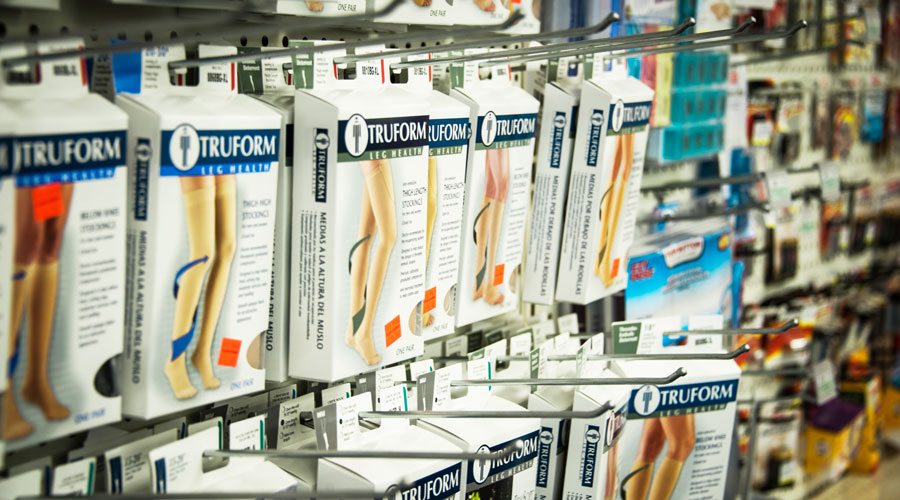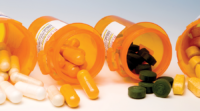If you’re constantly stocking the same selection of front-end products, you might be missing out on opportunities to grow your sales.
The popularity of front-end categories is always changing. Once you discover what categories are growing, you can adjust your stock to align with what’s trending, and maximize your pharmacy’s front-end sales potential.
Hamacher Resource Group completed research to unveil the top five categories poised for continued growth in the independent pharmacy channel. Hamacher developed infographics to showcase the categories that are performing well and to highlight which categories and subcategories have outperformed in independent pharmacies over chain drug stores. You can use this information to tweak your pharmacy’s front-end product selection and boost sales.
Take advantage of these growing trends. Here are the top five categories poised for growth, plus suggestions of products to stock.
1. Skin care
Skin care has shown strong and consistent gains during the past three years at independent community pharmacies. Its dollar sales volume has increased by 8.2 percent since 2009 and it’s poised to grow even more in the future.
What to add: Half of the category sales are made up of four subcategories: facial moisturizers and treatments; facial cleansers; hand and body cleaning; and acne medications. Consider expanding your selection of front-end facial washes, cleansers and acne treatments, and learn more about these products, so you can help patients find treatments that will help their skin problems. Ask your patients what skin care products and brands they currently use and add them to your pharmacy’s product selection.
2. Oral care
Not only has oral care grown 14 percent over the past four years, but its growth at independent community pharmacies has outpaced the category’s growth at chain and mass drugstores, making it a prime category to consider expanding.
What to add: Independent community pharmacies have seen some of the strongest growth in subcategories including denture care, gum care, floss and mouthwash. Expand your oral care offerings by looking at your market of patients and tailoring your selection to their needs. For example, if your pharmacy has a high concentration of older patients, consider beefing up your selection of denture care, or, if you have a lot of children, add more mouthwashes with kid-friendly flavors.
3. Diabetes care
Almost 40 percent of diabetes care sales occur at independent community pharmacies, making it the top-selling category for independents. Specifically, independent pharmacies outperform chain pharmacies in blood glucose testing, a subcategory that accounts for 83 percent of diabetes category sales.
What to add: Boost your sales in this category by charging for your expertise. Host classes on diabetes management, offer diet consultations specifically for diabetic patients and look for other ways you can combine consultations with expanded product offerings for diabetic patients, like specialty snacks or diabetic shoes. By building a reputation as a diabetes care expert, you’ll also pull in more diabetes patients and expand your potential for diabetes-related front-end sales.
4. Baby care
Despite record low birth rates in 2013, baby care has grown at independent community pharmacies by 40 percent over the past decade and by 15 percent since 2009. This growth is due in part to the growing trend of spending more on children. The U.S. Department of Agriculture estimated that the cost for a middle-income family to raise a child born in 2013 from a newborn until age 18 has grown more than $45,000, adjusted for inflation, from the cost of raising a child born in 1960.
What to add: Specifically, four subcategories are excelling in independent community pharmacies over chain drugstores: baby wipes; baby health, beauty and wellness; nutritionals and food; and training pants and swimmers. Take advantage of parents’ expanded budgets for their children and stock more expensive, higher-end baby products and brands, if it makes sense for your market.
5. Cold and allergy
Cold and allergy is the second-largest category in independent community pharmacies. The cough, cold, flu and sinus subcategory has seen an increase in dollars per unit and makes up 40 percent of dollar sales. Sales in the allergy subcategory have declined 20 percent over the past two years, but Hamacher predicts that this category will soon be back on the growth track.
What to add: To spur growth in this category expand your home remedies options. Patients often seek relief for seasonal allergies, so stock symptom-managing products, like freezable masks for sinus relief and eye drops. Also, stock the newest over-the-counter medications that treat both children and adult allergies. You can boost sales in the cold and flu category by always being stocked. Every time a patient comes in during cold and flu season looking for cough drops and you’re out, you lose a sale, so make sure you always have enough of these popular items on hand.
Make productive changes in your pharmacy’s front end that will meet patient’s needs in these trending categories. To learn more about each growing front-end category check out these infographics from Hamacher.












